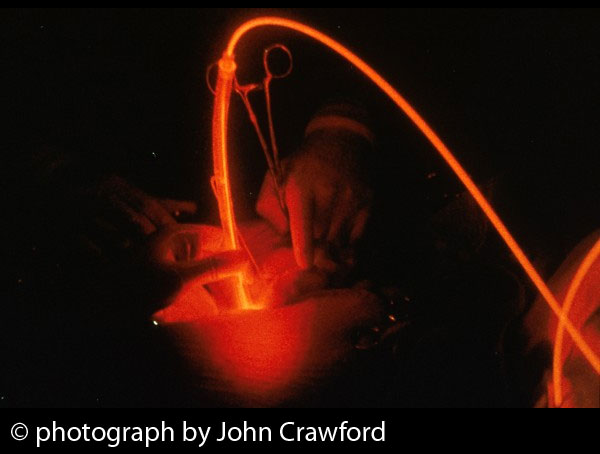New Light on Head & Neck Cancer: Secrets of Synergy
Head and neck cancer is the sixth most common cancer worldwide, with squamous cell tumors of the head and neck accounting for an estimated 500,000 new cancer cases each year. Two out of every three patients are diagnosed with locally advanced disease, and for these unfortunate patients, the recurrence rates have remained quite high at about 65 percent for the past four decades. Thus far, sadly, the addition of chemotherapy has not changed this high recurrence rate.
Nevertheless, there may be a way to make head and neck cancers more responsive to chemotherapy—while also making the chemo less toxic to the body. One promising option is photodynamic therapy (PDT). This past year, researchers in Korea assessed the effects of a combination of PDT with the widely used chemo drug, cisplatin, to treat human head and neck cancer.
Compared to the individual treatments, the combination of PDT with cisplatin chemo was found to be more effective in killing head and neck cancer cells in the test tube, as well as more effective in shrinking tumors in mice. Moreover, with the addition of PDT, the cisplatin dose could be substantially lowered, thus helping to minimize the chemo’s toxic side effects.
The new findings may point to a chemo-PDT combination that could prove to be a useful treatment modality for human head and neck cancer. These findings were published online ahead-of-print in the 12 July 2013 issue of General Physiology and Biophysics.
Another recent lab study found that Photoimmunotherapy (PIT) combined with the chemo drug daunorubicin led to greater survival in tumor-bearing mice than then either treatment was used alone. Based at the U.S. National Cancer Institute, the scientists concluded that concluded that “PIT greatly enhances delivery of [the chemotherapy] and thus holds promise to improve therapeutic responses.”
Finally, it’s worth noting that synergy enables not only a reduction in the chemotheray dose, but in the light dose as well. In a third study out of Tsinghua University in Beijing, China, researchers found that even very low doses of visible light could be effective in activating light-sensitizing agents (photosensitizers) used in tandem with chemotherapy. This study used intensities of visible light that were “even weaker than sunlight”.
Support us by buying our book, The Medicine of Light, and ebooks from our Photoimmune Discoveries eBook Series.
Sources
Ahn JC, Biswas R, Mondal A, Lee YK, Chung PS. Cisplatin enhances the efficacy of 5-Aminolevulinic acid mediated photodynamic therapy in human head and neck squamous cell carcinoma. Gen Physiol Biophys. 2013 Jul 12. [Epub ahead of print]
Ren H, Wu Y, Li Y, Cao W, Sun Z, Xu H, Zhang X. Visible-Light-Induced Disruption of Diselenide-Containing Layer-by-Layer Films: Toward Combination of Chemotherapy and Photodynamic Therapy. Small. 2013 Jun 5. [Epub ahead of print]
Sano K, Nakajima T, Choyke PL, Kobayashi H. Markedly enhanced permeability and retention effects induced by photo-immunotherapy of tumors. ACS Nano. 2013 Jan 22;7(1):717-24.
© 2013, Photoimmune Discoveries, BV
Related Posts
-
 Killing Tumors with Light: Insights into Anti-Tumor Immunity
No Comments | Jan 13, 2015
Killing Tumors with Light: Insights into Anti-Tumor Immunity
No Comments | Jan 13, 2015 -
 Stomping Out Staph Infections with PDT
No Comments | Jun 30, 2014
Stomping Out Staph Infections with PDT
No Comments | Jun 30, 2014 -
 Photodynamic Success Against Skull Base Brain Tumors
No Comments | Feb 28, 2014
Photodynamic Success Against Skull Base Brain Tumors
No Comments | Feb 28, 2014 -
 Bile Duct Tumors: New Treatment Insights
No Comments | Nov 14, 2014
Bile Duct Tumors: New Treatment Insights
No Comments | Nov 14, 2014

 English
English Français
Français Deutsch
Deutsch Nederlands
Nederlands